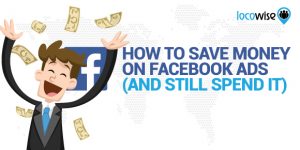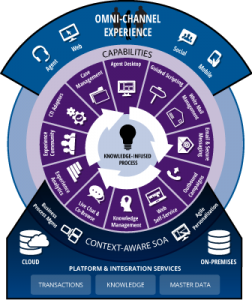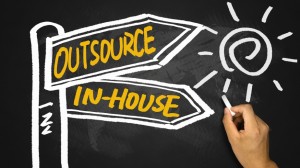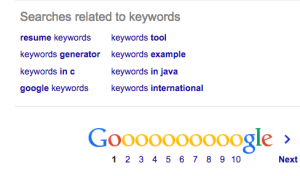
There’s a tendency in ecommerce to forget about specifics, and just get the traffic. It’s a “build it and they will come” type of mentality, and relies solely on the expectation that somehow, someway that traffic will eventually turn into customers. For certainty, unless your website is truly awful, you will get customers – eventually.
But the pure pursuit of traffic alone is bound to end up with wasted time and wasted opportunity, and you’re unlikely to find any real ecommerce professional just focusing on traffic. Conversely, they’re likely centered on another core metric: conversion rate.
What is a Conversion Rate?
Conversion rate is a unit of measurement that illustrates the rate by which traffic converts to customers. If you get 4 customers for every 100 unique sessions, you’ve got a conversion rate of 4%. Here’s the not-so-difficult (and very rough) formula, which includes metrics you ought to grab from Google Analytics (it’s very easy to install analytics on your Cratejoy store):
Number of Sales / Number of Unique Visitors x 100
Take a moment to pull up your analytics, navigate back to your launch, and then perform the math with all time sales. Then perform the math with just sales that were for recurring subscriptions. If these are below 4%, there’s a good chance you can apply some simple lessons to get it up there – 3.5%-4% conversion rates are considered average conversion rates.
A note: When testing your website for conversions, keep sample size in mind. This is the number of people who make up your test group or sample. Make sure you’re measuring large enough segments of traffic that are similar in size with each test. This helps you accurately understand the changes in conversion rates, and helps avoid attributing subtle difference to factors out of your control, like margin of error.
Principle #1: Simple Design (and Clean Navigation)
I’m going to go ahead and open this up with an ode to a KissMetric piece I read late last year. It stuck out to me because of what it borrowed from psychology as it’s first principle to increase conversion rates: keep it simple.
Adopted from Gestalt’s Law of Prägnanz (which translates literally to the Law of Pithiness), the author starts by identifying an underlying tendency by humans. We prefer clear, orderly, and simple things. Overly complex situations bother us. And the reality is there for most of us: who reads lengthy, complex terms of conditions or privacy policies? No one. On the other hand, who reads the few sentences describing an “easy” return policy? Most of us do. (For some of us, even that is too complex).
While we can go further with the example, the point is there: keep things simple to keep people focused, and keeping people focused is the first part of converting them to paying customers. What does this mean for your website?:
- Make your value propositions clear. They should be large, visible and poignant.
- Simple navigation. Don’t clutter your menu with dozens of pages and links. It should read something like: Subscribe, How it Work, FAQs, and Shop (if you have one). You can have more, but don’t make it overwhelming.
- Show your subscription box clearly. Because you’re selling a subscription service, beautifully lay out the items and types of products subscribers can expect. This is usually most effective when done at the top of the page.
- Simple check out process. Luckily, Cratejoy has already thought through checkout and makes it easy for you to maintain simplicity even while adding the option to customize boxes for customers.
Principle #2: Color Psychology
The second strategy to consider deals with color psychology. Colors have powerful effects on our behavior and emotions at both conscious and subconscious levels. Because of this, they can greatly affect the rate at which your visitors subscribe. And that’s not just a statement for shock value: according to Emerald Insight’s study on the Impact of Color on Marketing, “People make up their minds within 90 seconds of their initial interactions with either people or products. About 62‐90 percent of the assessment is based on colors alone.”
So what colors have you been using? Do they clash? Do they communicate the values and personality of your brand?
Here’s a great breakdown from Logo Company. Notice both the inner and outer logos as well (those dealing with neutral tones and multiple colors):
A key takeaway from this graphic is this: there is no best color. Think about what works best with your branding, links, and call to actions, and use that. All of these colors are effective, and when used intelligently in your design, will help create an experience more apt at converting customers.
Principle #3: A Testing Culture
The last property of a high converting site deals less with the site itself, and more with the minds behind it – high conversion love companies with a testing culture!
What do we mean by this? Primarily that you and your team are always testing new ideas, call to actions, landing pages, conversion funnels, advertisements, content, and so on. A testing culture is one that is open to trying new things, identifying strengths and weaknesses, correcting and optimizing, and employing the best result. This culture is data-driven – it makes and tests hypotheses rigorously.
There are a number of ways to test these elements for your website. The “simple” way would be simple compare analytics for given periods of time (using the formula from above, then isolating dates in Google Analytics). Another option is to use an A/B testing tool. A/B testing is a way to have two live variations of a website, landing page, or checkout, and to watch in real time how traffic acts differently. Optimizely is a great tool that does this.
Here are some things you might want to consider testing:
- The Call to Action Bar at the top of your website.
- Homepage images
- Value propositions listed on the homepage
- Call to Action phrasing on your buttons (Subscribe Today! Sign up now! Reserve your box!)
- General design elements: where you put customer reviews, value propositions, information, pricing etc.
Reach High Conversions with Your Cratejoy Store
The big takeaway here is that you CAN increase conversions on your website. At times, it may feel like an uphill battle, with only incremental changes, but it can be done. Make it a point to tweak, test, and update as much as needed. Work with fresh eyes, and constantly come to your site with an open mind.
What’s more, during your tests, keep the source of your traffic in mind. If you’re planning specific campaigns with specific sources, do your best to track those visitors accordinly: the sources of traffic can, at times, have a huge affect on if those customers are more or less likely to convert. In the near future, we’ll also be releasing a guide on specifically setting up conversion tracking for your Cratejoy store, so you can even more accurately track your conversions.
(180)







